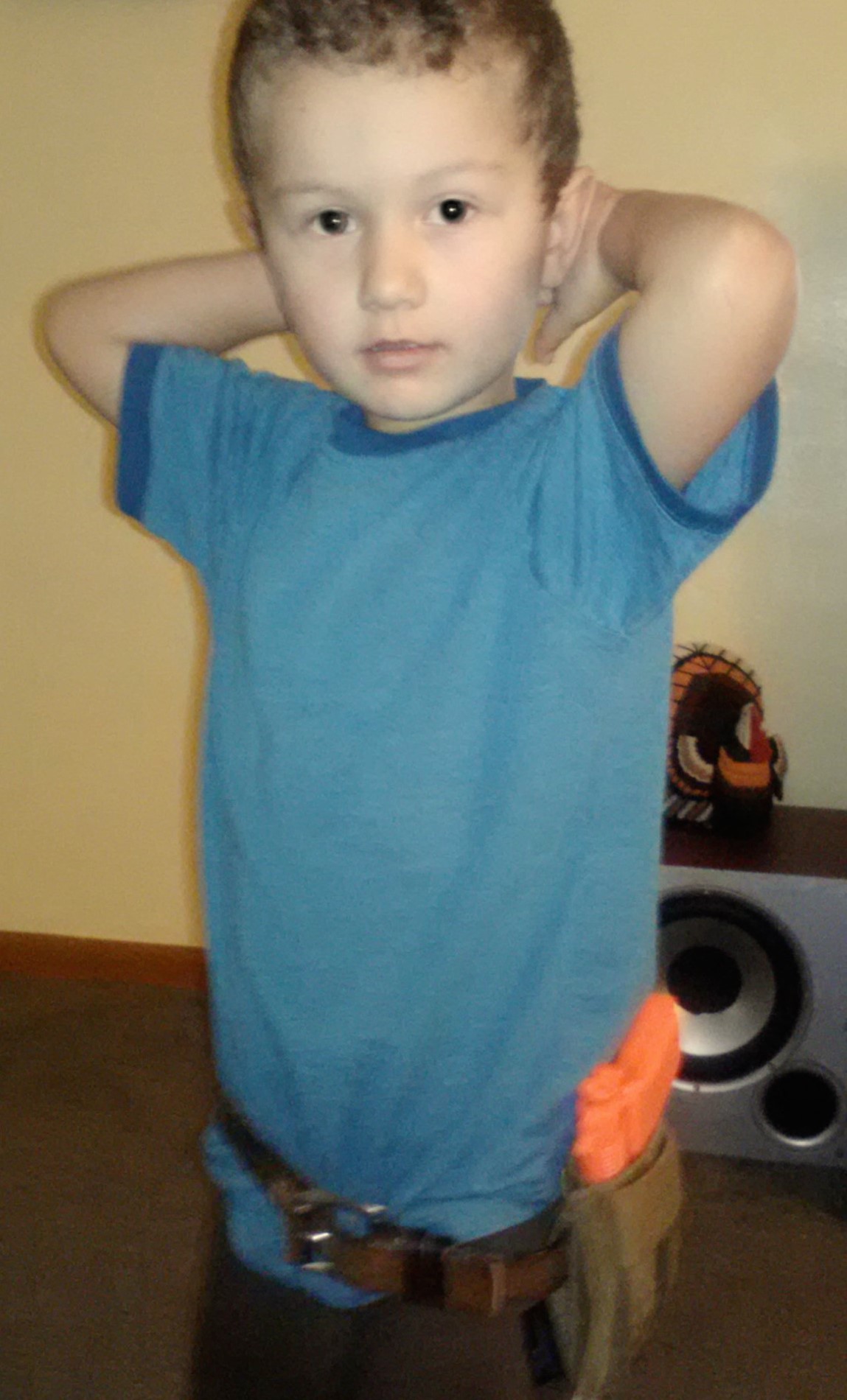
My son has been around firearms his whole life.
“Dear God, please help me teach this child how to read a situation and respond appropriately.”
Seconds after he was born, I held my son Augie, who was still covered in slime and goo. I looked into his eyes… and this was my prayer. I knew he was the best of his mother and me, and that I had and still have a responsibility to prepare him to be a strong, kind, patient, and loving American man, and someday his own family first responder.
Protecting my family is paramount. It is a prime directive for every parent. We do all that we can to shield our children from pain, evil, sadness, and fear. This is appropriate, but at some point we must prepare our precious children to exist in the real world. Even now that he is 11 years old, every night before he goes to bed, I say to him, “Dream of duckies, bunnies, and kitty cats.” I want him to retain his innocence as long as he can. However, failing to prepare him for the real world will ultimately set him up for failure.
The “right time” to introduce reality and “real-life” education may be different for every child. Each child is unique and, even though Dr. Spock wrote the standard book on childcare, there is no standard as to when your kid will be ready for defensive concepts, principles, and handling of defensive tools. Perhaps some of the things I did to prepare my son may help you decide what is appropriate for your future family first responder.
PREDATOR—PREY
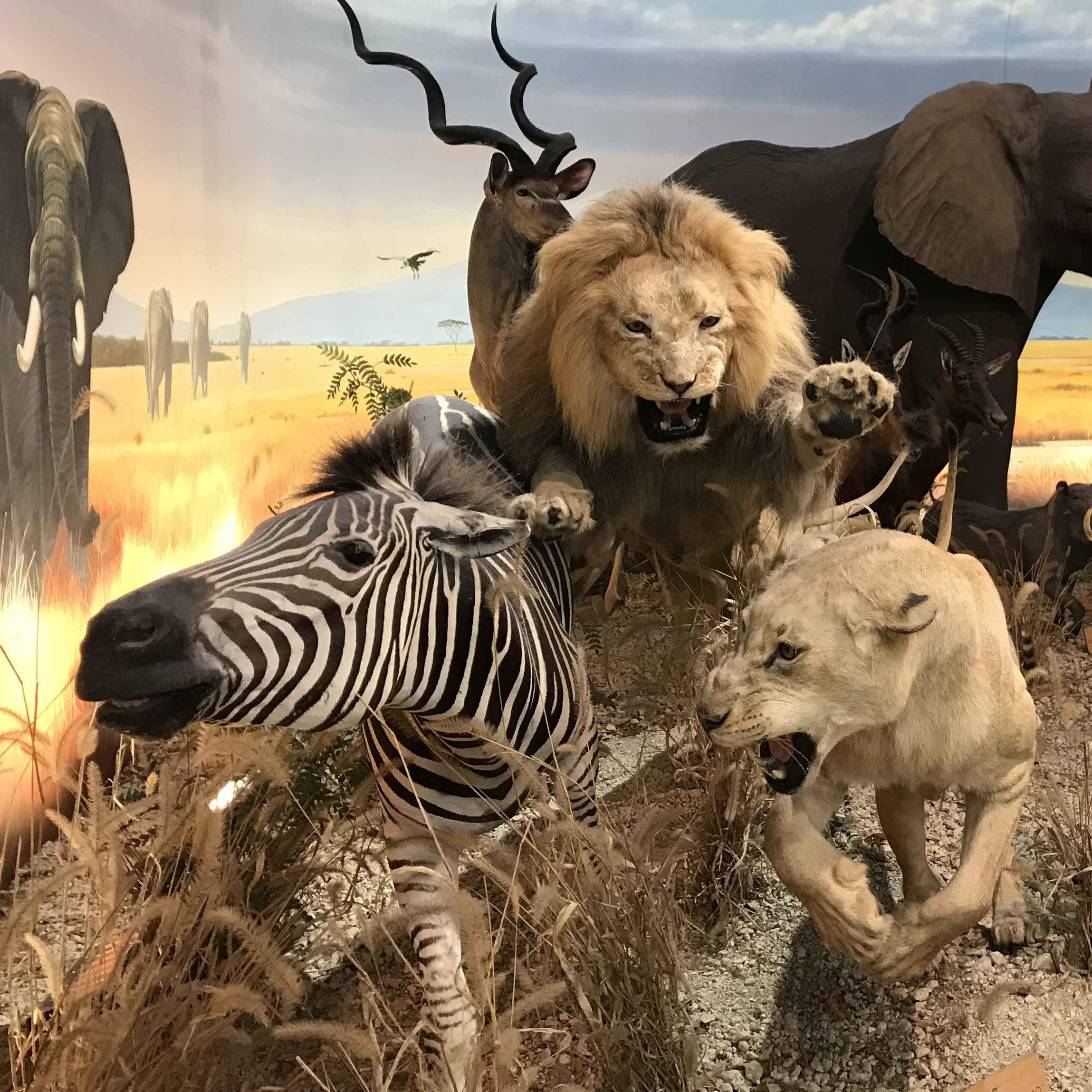 Animal or human, a predator is a predator.
Animal or human, a predator is a predator.
Augie became interested in animals at a very young age. He had no interest in the “baby” animal shows—he was instantly drawn to “science-y” animal documentaries. I realized that I was broaching the topic of personal defense by watching these documentaries on Animal Planet. The food chain and eco-systems are rife with examples of predators and prey. Concepts like “walking with purpose” and “awareness” are easily connected with different predator-prey relationships. The lion doesn’t attack the zebra that is alert and healthy and in the middle of the herd. It goes after the weaker one that is alone, away from the herd, or not paying attention.
The meerkat keeps his eyes open and when potential danger approaches, he evades and barricades into a safe area to avoid confrontation. After multiple exposures to film of big cats or wolves, one can begin to apply the concepts and principles of awareness, avoidance, opportunistic predators, and using righteous violence to protect oneself from becoming a victim. The elk that defends its calf from wolves by kicking and goring them and never giving up turns the snow red with blood, but the elk and calf survive.
STRANGER DANGER
 The human animal is the most dangerous.
The human animal is the most dangerous.
Humans are the apex predator of the food chain. Much like “animal predators,” there are “human predators.” Once, when Augie was about five years old, while watching a documentary about elephants, he asked, “Why would someone poach an elephant just for the tusks? It is such a waste. That is so sad.” I replied, “Some people do terrible things and don’t care about the waste or damage that they do. Some people kill just to take something you have. They wanted the tusks because they’re valuable, and they did not care who or what they destroyed to get them.” Augie thought about this and, after a few minutes, he asked, “Is that why you carry your gun? To protect us from bad people?” I knew right then that a light bulb had gone off, and I felt it was appropriate to have deeper-level conversations.
STOP—DON’T TOUCH—RUN AWAY—TELL AN ADULT
As the son of a professional firearms safety and defensive educator, my boy has been around firearms literally his whole life. He sees me wearing my gun, he sees me teaching and demoing with guns, he hears me talk about guns, he sees me shoot guns, he witnesses my students and instructor candidates handling and shooting guns, and he sees me clean guns and store them.
When Augie was about three years old, I showed him an Eddie Eagle GunSafe video. The NRA’s Eddie Eagle is a well-intentioned program designed to keep kids safe, but as the video played and the “stop, don’t touch, run away, tell an adult” message was repeated, I thought, “If I let the message end at ‘tell an adult,’ I’ll be setting him up for a fail.”
Then I wondered how many adults and parents allow the message to end there, never taking the opportunity to engage the curious child with education so they would have the knowledge to be able to respect firearms and handle a gun in a safe and prudent manner. We want to avoid reinforcing the narrative that the gun, on its own, can harm someone. We also want to remove the taboo and mystery of firearms.
I recognize that children must have maturity to safely handle firearms. I also agree that the Eddie Eagle message is appropriate for those who have not received training, and its message does keep children safe; but we must encourage training for when the child is ready to learn to solve problems on their own.
I began to teach Augie safe firearm handling practices when he was around four or five years old. I started with the “safe direction” and “trigger finger discipline” concepts. He was not ready to shoot, but I felt it was important for him to recognize safe handling rules and practices. I used an orange plastic toy dart gun and would lay it on the table and have him rotate the dart gun to point it in what was the safest possible direction while monitoring that he kept his fingers away from the trigger. Eventually I fashioned a holster for him to wear out of a magazine pouch and had him pick the toy gun up off the table and put it into his holster while managing good muzzle and trigger finger discipline.
We don’t say “stay away and don’t touch the electrical outlet” forever. Ultimately we teach our kids to safely use the electrical outlet. Under normal working conditions, the outlet is not going to magically fire a bolt of electricity from the socket, but if used incorrectly or abused, the outlet could potentially shock you. The object on its own cannot and will not harm anyone.
SAFETY RULES
 Firearms safety training is for everyone, even if you don’t own a gun or are too young to own one.
Firearms safety training is for everyone, even if you don’t own a gun or are too young to own one.
Establishing safety rules, reviewing them, and demoing how to apply them are essential first steps in educating our young ones on how to handle firearms. Just about every training organization, agency, and range has its own version of the safety rules. “Gun people” often argue about which “brand” of rules is best, but the ultimate goal of all of them is to keep people safe.
Explaining safety rules to someone learning to handle firearms is critical, and every set of rules I am familiar with in some way covers the safe direction concept, trigger avoidance until the decision to shoot has been made, and keeping guns unloaded when they are not being used. But personal responsibility must also be reinforced too. In the I.C.E. Training programs and the USCCA DSF programs, we also use the “Big Picture Rule”:
Recognize that you are in control of a firearm. If you use it negligently or with malice, you have the potential to harm or kill yourself or someone else.When I was six years old, our family cat crawled up onto the engine of my dad’s pickup truck to stay warm. Not knowing this, my dad started the truck and the fan blade cut the cat up terribly. My dad felt the most humane thing to do was dispatch the animal. My dad was a hard man from a generation past. He brought me out and said, “This animal is in pain and we need to put him out of his misery. I want you to see what happens when you shoot something.” Every time I handle a firearm, I remember that moment. I have not taught my son this lesson in this manner.
Each of us, in our own way, must articulate the responsibility concept when we teach our children to handle firearms. Some kids can handle a little more “reality” than others, but ultimately, we want to be positive and reinforce the positive aspects of the gun. The firearm can help us to harvest the meat of our prey animal to feed the family, it can help us to enjoy a day together on the range, and it can be used for righteous violence to help us defend ourselves and our loved ones against an attack from a human predator that we could not avoid.
A RITE OF PASSAGE
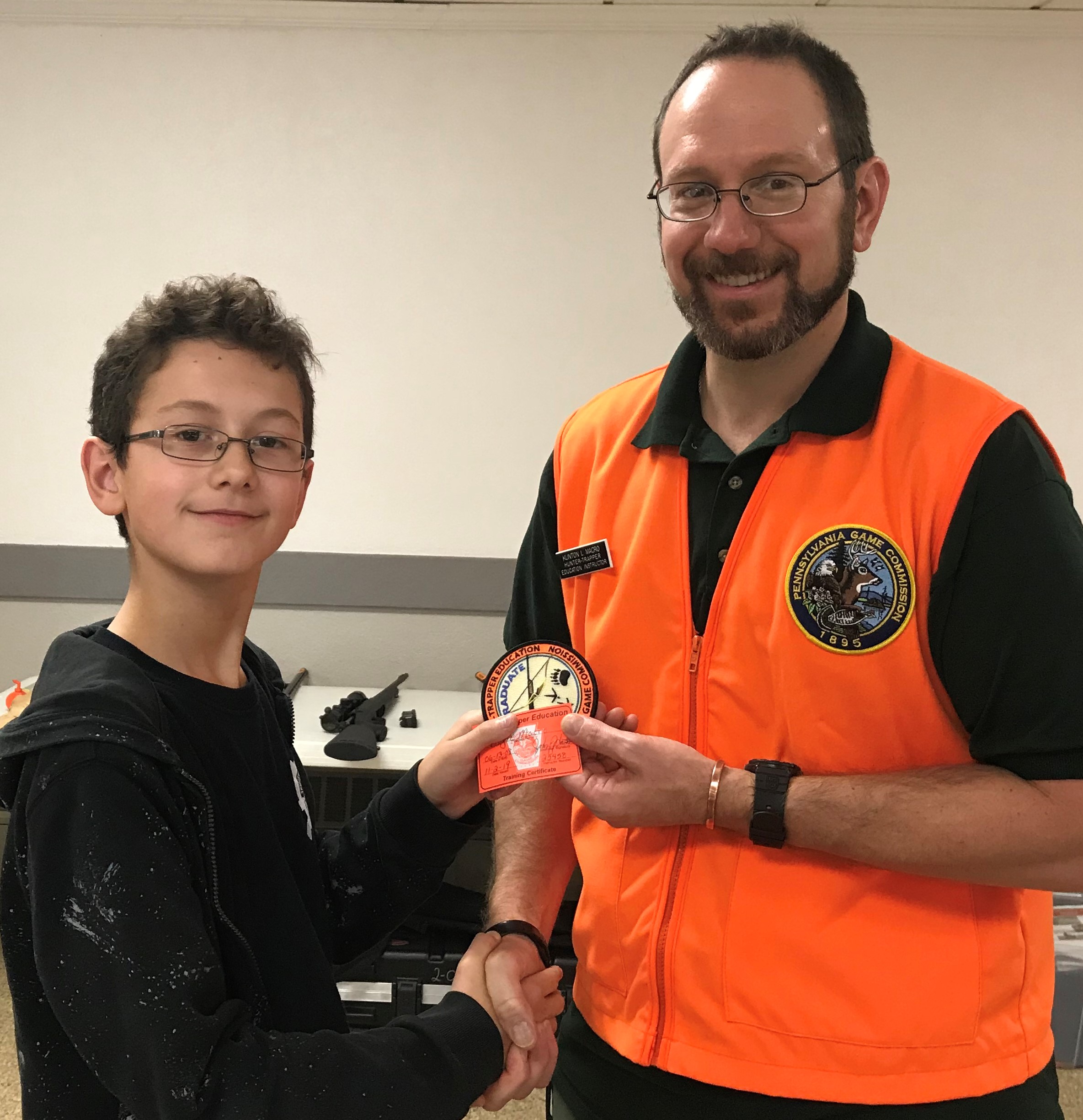 Proud father, proud son.
Proud father, proud son.
Last year I was able to do something that most parents do not get to do: give my own son his Hunter Safety Course. Augie has not expressed interest in harvesting an animal, but taking the Hunter/Trapper Education Course is a rite of passage for many 11- to 12-year-old Pennsylvanians, and someday he may want or need to harvest an animal to feed his family. I took my Hunter Safety Course in 1987 and Malcolm Kitchen was the instructor. It was a memorable experience, and I hope that Augie will look back at his Hunter Safety Course with the same fondness. During the class, he took great notes, asked questions, participated 110%, and made me proud. He took the training opportunity seriously.
Hunter Safety Courses are a great way for kids to receive structured gun safety training, and classes are free in most states. Even if a child is not interested in hunting, the safety aspect of the class is invaluable for preparing our next generation of Americans to appreciate the safe handling of firearms. I am a huge opponent of mandatory training for the purchase or carry of a firearm, but I would support mandatory firearm safety training at the grade-school level. Talking about safe handling and positive, appropriate, and ethical uses of firearms demystifies the “gun” and helps instill an appreciation of our individual rights and liberties.
STORY TIME
 Reading to your child is time well spent.
Reading to your child is time well spent.
There are some excellent books designed to break the ice and positively introduce the subject of firearms into our kids’ minds: Sheepdogs and Why Mommy Carries a Gun by Lt. Col. David Grossman and Stephanie Rogish, and My Daddy Has a Gun…and My Mom Does Too! by Rob Pincus. All three books offer an opportunity to sit together and talk about the safe and proper use of firearms. It’s always good to read to our kids, so why not educate them at the same time?
WELL-ROUNDED FUTURE FAMILY FIRST RESPONDER
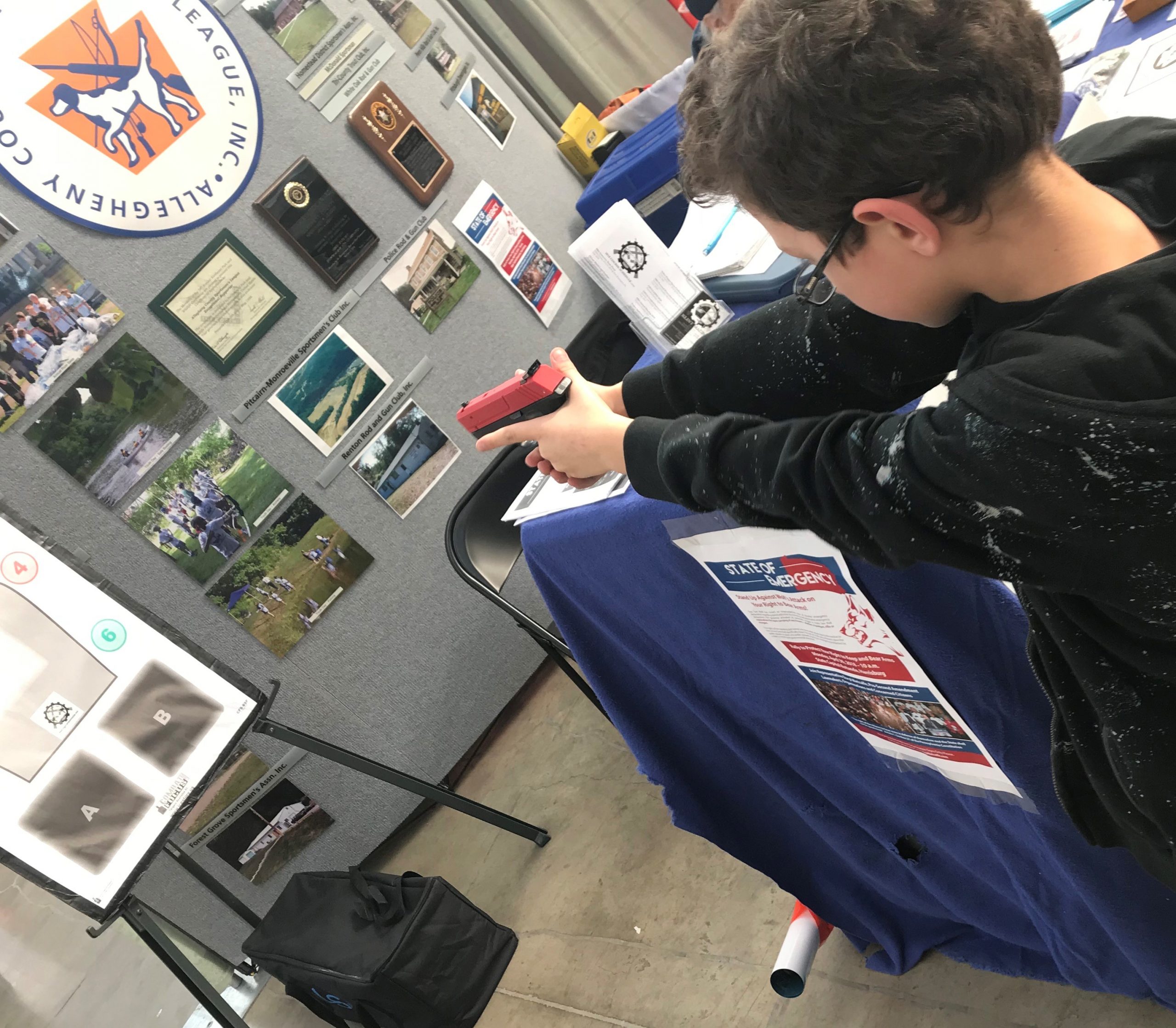 SIRT pistols and LASR software allow for simulated training at home.
SIRT pistols and LASR software allow for simulated training at home.
I have been able to use the SIRT (Shot Indicating Resetting Trigger) Laser Trainer to help teach safe handling and proper use of pistols with Augie, who first started showing an interest in using the SIRTs around age eight. He really enjoys using the SIRT in combination with the LASR software (Laser Activated Shot Reporter). It doesn’t hurt that it’s my voice on the LASR software. My son doesn’t enjoy live fire and going to the range as much as I do, at least not yet. I do not want to push him. Using simulated training technology to establish safe handling skills, consistent kinesthetic alignment, and sighted and unsighted fire, all without ear protection and at home, has proven invaluable in beginning to develop him into a future defender.
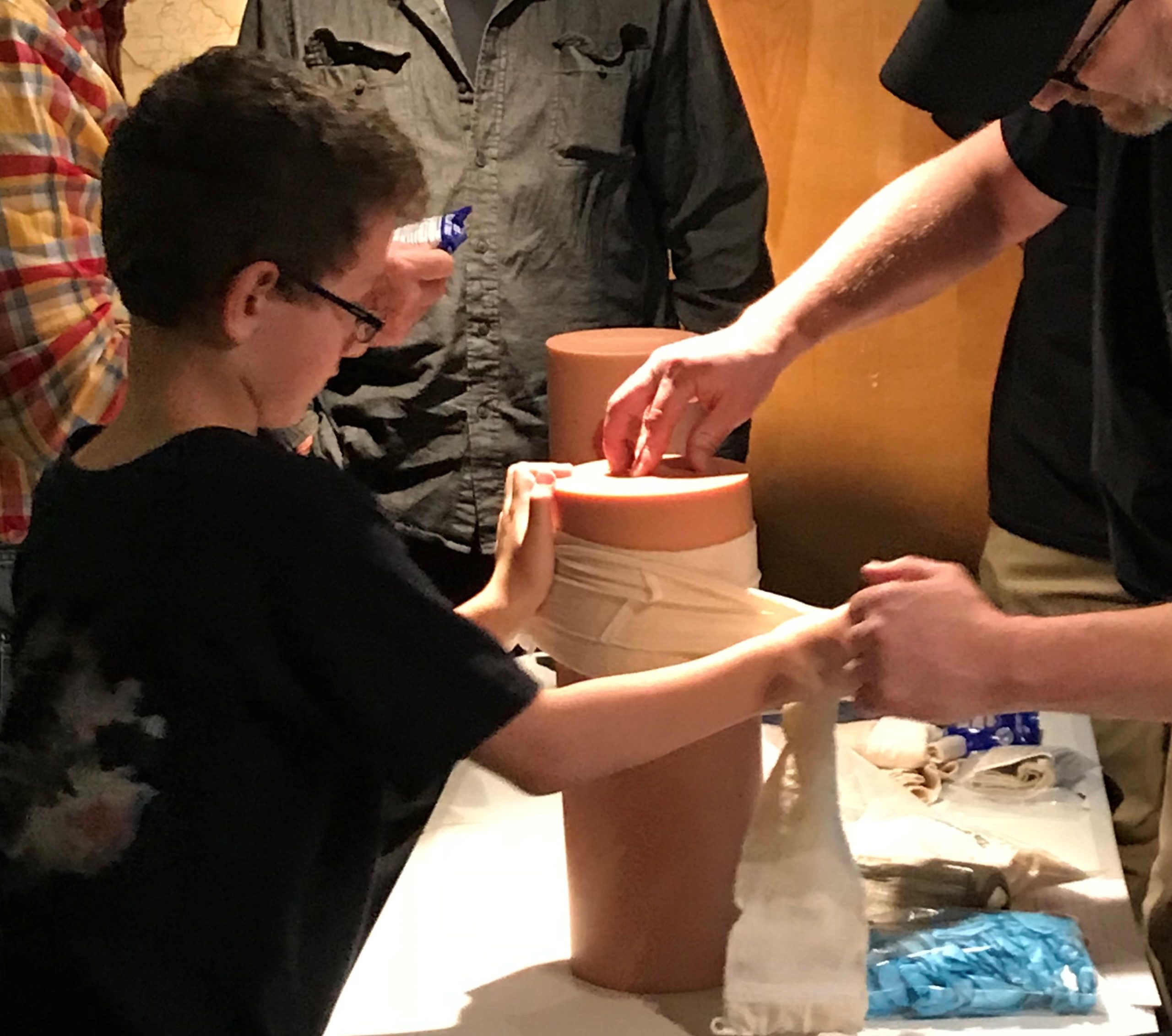 Stop the Bleed classes and other “non-gun” training help kids be better prepared for emergencies.
Stop the Bleed classes and other “non-gun” training help kids be better prepared for emergencies.
Expose your children to all the training you take. When he was nine years old, Augie audited Alessandro Padovani’s in-person Safer, Faster Knife Defense course. When he was 10, he attended CPR and Stop the Bleed courses. He has sat through numerous legal seminars, basic safety classes, and attended pro-liberty and 2A events. Sometimes he draws in his notebook, sometimes he is completely engaged, but he is always listening. Kids are like sponges; don’t be afraid to give them opportunities to learn by osmosis.
As I stated earlier, each child is different. I have had seven- to eight-year-old children safely apply the fundamentals of firing a shot while on my firing line at our sportsmen’s club youth rifle program. On the other hand, I had to disarm a 48-year-old grown man because he had a horrible attitude and could not consistently demonstrate basic safe gun-handling practices. You can’t gauge maturity by age alone.
Ultimately we want to develop well-rounded family first responders. Don’t underestimate your child’s learning potential. Empower them with education so they will be able to safely and appropriately handle firearms, learn life-saving skills, keep an eye out for danger, and ultimately read a situation and have the ability and confidence to respond appropriately.
My Dad started working with me around Firearms about age 6. I would help him clean his rifles and shotguns, and when he'd go to the range, he'd take me along and I'd get to shoot a few .22s out of an old Savage single shot he had. He told me then "Curiosity, is what gets people hurt, so anytime I was curious about guns, I was to come get him and he's satisfy my curiosity." His guns were stored on a rack in a big closet, but I was never tempted to mess with them unless he was present. I grew up to be a gun owner, and when my kids reached 6 or 7, I repeated all that he'd done with me. Both my son and daughter are responsible gun owners now, and I began working with the older Grandkids repeating what had worked for 3 generations, satisfying their curiosity. These days the guns are locked up, as our State has Safe Storage Laws on the books now, but I don't think a lock will ever satisfy "curiosity." If anything, it'll make curiosity worse. We didn't have Eddie Eaglevand such programs back then, bit we did have Dads, Uncles and Grandpas to teach not only Safety, bit respect for the Tool a Firearm is. That, I believe, is a large part of what kids who get in trouble messing around with the gun they found in mommy's drawer, are missing out one. Moms, can be teachers too.
You mentioned the NRA and the Eddie Eagle program. I agree with you that the story should not end with "tell an adult", instead the program needs to be corrected and expanded. I believe that the NRA should go back to its roots and put firearms education and contests as the primary focus. Stay abreast of the political arena and inform the members of legislation that may be problematic, but drop this as the primary reason to exist. I believe if education had remained the primary focus of the NRA we would not see the political ramblings and misinformation that is used and accepted by a lot of people today.
Great article. In 1953, when I was six years old, my family moved to a rural area of West Virginia. That is when I first learned to shoot both a 22 rifle and a 32 revolver. We’d set up targets on the hillside behind our house and shoot as a family. I’ll never forget the lady who owned that land coming out and handing me six kitchen matches, saying to run up the hill and stick them half way into the ground. It seemed like a long way, but it was probably only 50 to 100 feet away. She then borrowed our rifle and lit six matches with six shots, breaking none of them. As time went on, she taught us all a lot about firearm safety and how to hit what we were aiming at. Today I carry a Ruger LCR in my pocket, loaded with 357 JHP’s, and I can still hit what I’m aiming at.
My dad shooting and letting me shoot plastic gallon milk jugs filled with water, gave me a good example of what a gun would do to a person.
My son was large & mature for his age. He started shooting his single shot 22 at 4 & started deer hunting at 10 after a hunter safety course. He was also trained in what to do if we ever had a “critical incident” at home or out in public. Results will vary with each child.
Dr. Spock is what causes most of the problems we have today with our kids.